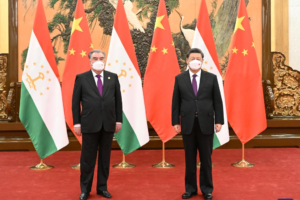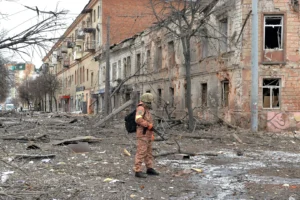It’s been more than a month since wildfires ravaged the Hawaiian island of Maui, claiming at least 115 lives, destroying more than 2,200 buildings and homes and uprooting thousands. In Hawaii’s most historic town, the 19th-Century timber-framed community of Lāhainā, where Hawaiian chiefs and kings once ruled a united Hawaiian kingdom, flames engulfed an estimated 2,107 acres in one of the deadliest wildfires in US history.
In the aftermath of the tragedy, officials and residents initially encouraged tourists to cancel their vacations and stay away from the island. But as restaurants, hotels and tour operators are being forced to lay off workers and unemployment rates surge, they’re now sending out a different message for visitors: please return to Maui – but do so responsibly.
According to Ilihia Gionson, a spokesperson at the Hawai’i Tourism Authority (HTA), the two most important things visitors can bring on a trip to Maui now are patience and grace. “Respectful, compassionate and responsible travel to the island of Maui is not only welcome but also highly encouraged,” he emphasised.

From understanding where you can and can’t go to helping the island and its residents rebuild after the disaster, here is what native Hawaiians are asking visitors to consider as they return to Maui.
Know where to go
Given the extensive devastation on the north-western side of the island, the HTA reports that Lāhainā will remain closed to the public until further notice, while the communities of Kā’anapali, Nāpili, Honokōwai and Kapalua will fully reopen to the public on 8 October – two months after the wildfires first erupted.
Yet, Maui’s north-western sliver only comprises a small portion of Hawaii’s second largest and second-most visited island. In fact, Maui’s beguiling mix of lush rainforests, black-sand beaches and hiking trails that meander from mauka (mountain) to makai (ocean) have led Hawaiians themselves to coin the popular local expression “Maui no ka ‘oi” (Maui is the best), and residents say now is a great time to explore “the Valley Isle’s” wilder side.
Crystal Smythe, a native Hawaiian cultural practitioner and Maui resident, recommends travellers explore Maui’s upcountry region, including hiking the Hosmer Grove Trailhead in Haleakalā National Park – staying until dusk to catch one of Maui’s most spectacular sunsets. “[You can also] enjoy other parts of the island that are also rich in beauty and culture like Haiku and Paia, that are renowned for windsurfing and vibrant ocean town atmospheres,” she said. “Some of our favourite locally owned places to eat include Cafe o’Lei at the Mill House in Waikapu and SixtyTwo MarcKet in historical Wailuku town.”

“Everyone out here has been affected by the current situation,” said Jessie Johnson, a native Hawaiian and long-time Maui resident who co-owns the photography company Pine & Palm Productions. “So, any participation in the economy is helpful.” She suggests hiking the Pipiwai Trail to see crashing waterfalls and exploring Iao Valley to marvel at one of Maui’s most recognisable landmarks, the 1,200ft-tall rocky spire known as Īao Needle. She also recommends stopping by local businesses in Kihei, Wailea, Kahului, Wailuku, Hana, Kula and Ma’alaea.
Support local businesses
For small business owners like Johnson, tourism plays a pivotal role in sustaining local livelihoods. Her business, which used to average 12 to 15 bookings per week, now receives only three to four bookings a month.
“This drastic reduction in business has placed us in a precarious financial situation,” she explained. “We have had to let go of our team until we are able to generate income again.”
Johnson is far from alone. According to the HTA, approximately 40% of all jobs on Maui depend on visitor spending. “Over 8,000 people have filed for unemployment since the fires,” Gionson said.

One way Smythe believes tourists can help local communities in Maui is by looking at the businesses and activities listed on Maui Nui First’s website (a resource dedicated to locally owned shops, restaurants, inns and tour operators) while planning their trips.
Johnson couldn’t agree more. “Large box stores and resorts have the financial backing to survive this drought in tourism,” she said. “Supporting small businesses as much as possible will help secure those jobs that are at higher risk in Maui’s current economic climate.”
The HTA estimates that Maui’s recent drop in visitors is costing the state $9m a day. “The livelihoods of countless residents here on the island depend on the resumption of tourism,” said Johnson. “As a resident, we are all encouraging visitors to do as much as they can while visiting Maui, whether it be hiring a kayak guide to doing some yoga with cute baby goats on the slope of Haleakalā to acquiring something more permanent like a tattoo.”
Johnson also emphasised the importance of being a self-sufficient traveller in Maui during these trying times. “Try not to rely on local resources for necessities, toiletries or for baby and feminine hygiene products.”

Hiker in Īao Valley, Maui
Give back
Johnson explained that one of the most important things visitors can do before planning a trip to Maui is to understand what locals need. Her Facebook group, Maui Travelers Guide, offers a wealth of information for its 11,000 members about how to contribute to Maui’s recovery and support its residents.
“The best way to support businesses here on the island is for visitors to do whatever they can, within their means,” Johnson advised. “This could range from enjoying a plate lunch at a roadside stop on the way to [the beaches at] Hana to purchasing a pair of sunglasses at Sunglass Hut to help employees earn commissions. Every contribution, no matter how big or small, makes a difference.”
According to Elijah Kalā McShane, the co-founder of Awakened Aloha, an organisation dedicated to sharing native Hawaiians’ ancient knowledge with the modern world, “Responsible tourism practices are the only way forward for Maui.”
“By purchasing local produce, supporting local businesses and actively engaging with the community during your visit, you can experience Hawai’i beyond the glitz and glamour of advertising,” he said. McShane recommends visitors follow four steps to be a pono (righteous) visitor: getting educated, making offerings, supporting aloha ‘āina (literally: “love of the land”) and building ‘ohana (family).

To do this, McShane suggests visitors focus on experiences related to Hawaiian culture, history and the arts. “Offering your time to volunteer opportunities that serve the community is a great way to give back before taking,” he added. Websites like MauiNuiStrong by the County of Maui and HTA’s Mālama Hawai’i volunteer activities list various ways travellers can contribute towards disaster recovery efforts.
McShane also suggests tourists coming to Maui connect with local artisans and build relationships in a respectful way. “We see ‘ohana as the foundation of our community, where we support each other, love each other and build with each other,” he said. “You can use social media to connect with locals before your trip, plan a private tour or make connections in your profession that benefit the cultural integrity of Hawai’i.”
Remember the aloha spirit
Undoubtedly one of the most iconic Hawaiian words, “aloha” resonates across the islands. While many visitors might equate it as a simple greeting or farewell, its significance extends far beyond these surface expressions. “Aloha” embodies a profound way of life, encapsulating the love, compassion and mutual respect that Hawaiians share for both each other and their natural surroundings.
For native Hawaiians like Johnson and McShane, embodying “the aloha spirit” is now more important than ever, and tourists are strongly advised to be mindful of the ongoing challenges faced by local communities.

Sunset in Maui, Hawai’i
“Many residents are still grappling with recent events, and it will take time for things to return to normal, particularly in places like Lāhainā Town, where many homes remain inaccessible and hold deep emotional significance,” said Johnson. “By travelling responsibly and showing consideration for our community’s needs, visitors can play a vital role in fostering a positive and supportive environment during Maui’s healing process.”
In the words of the beloved Hawaiian poet and philosopher Aunty Pilahi Paki, “The world will turn to Hawai’i as they search for peace because Hawai’i has the key; and that key is aloha.”
Source : BBC











